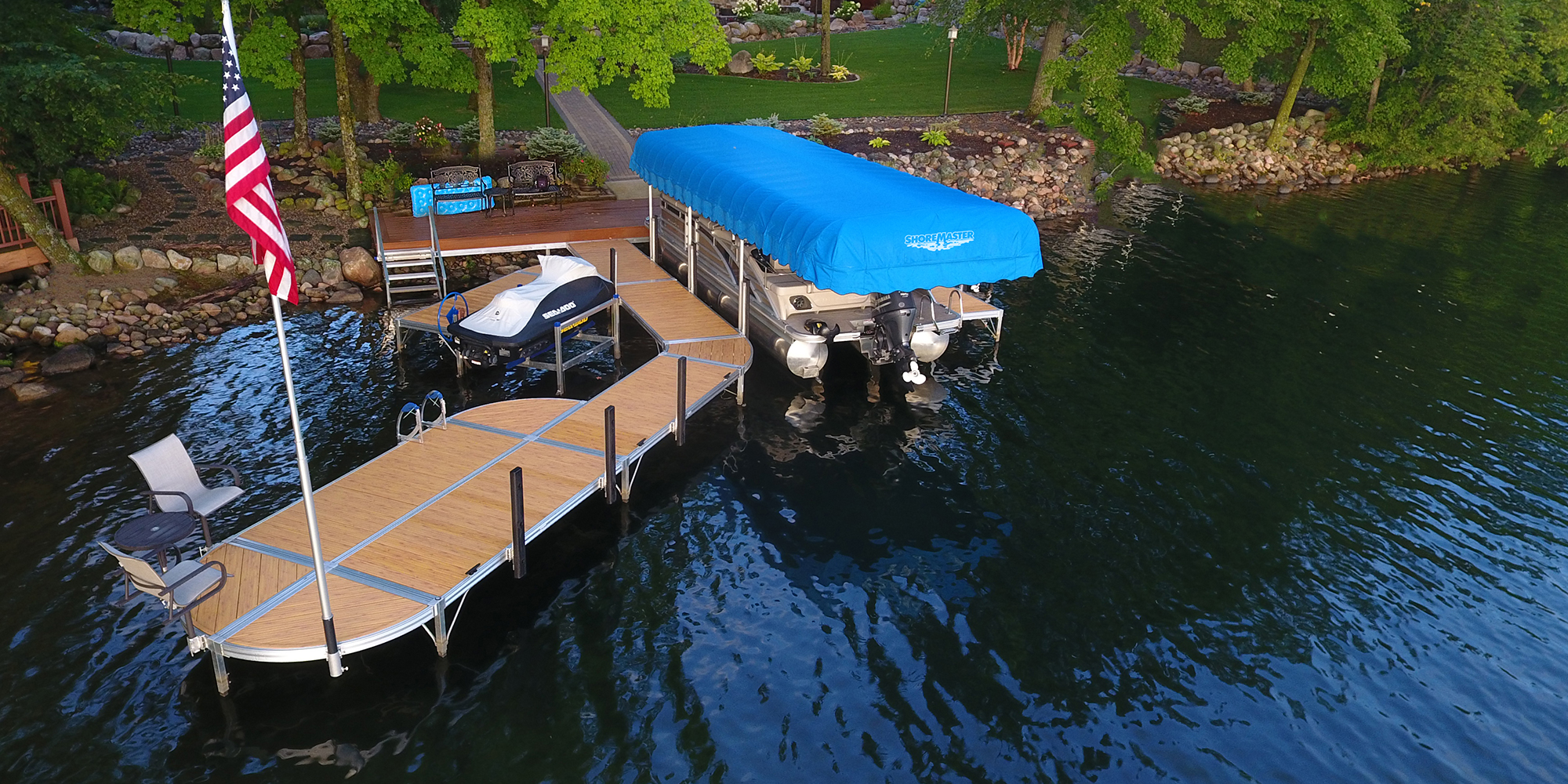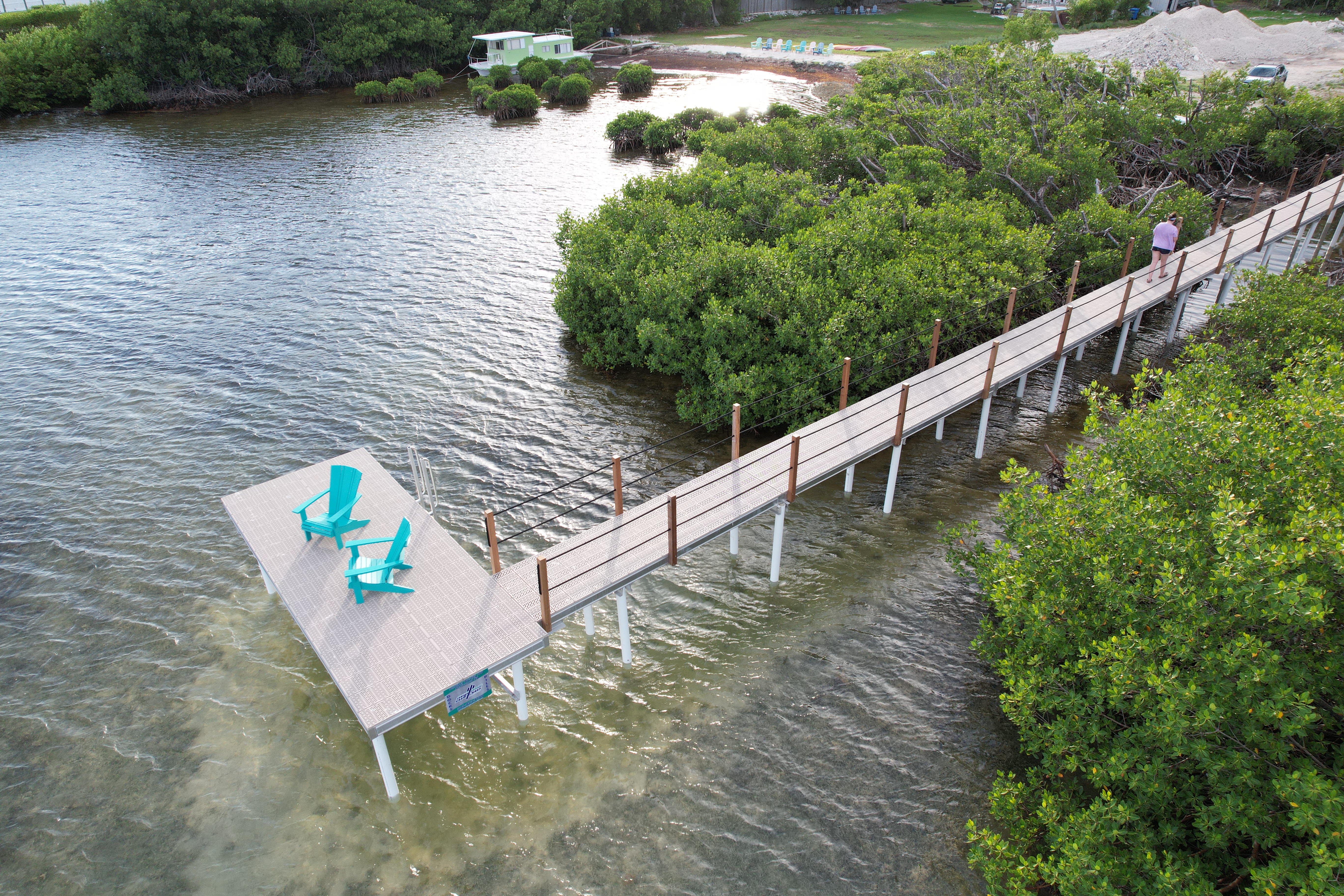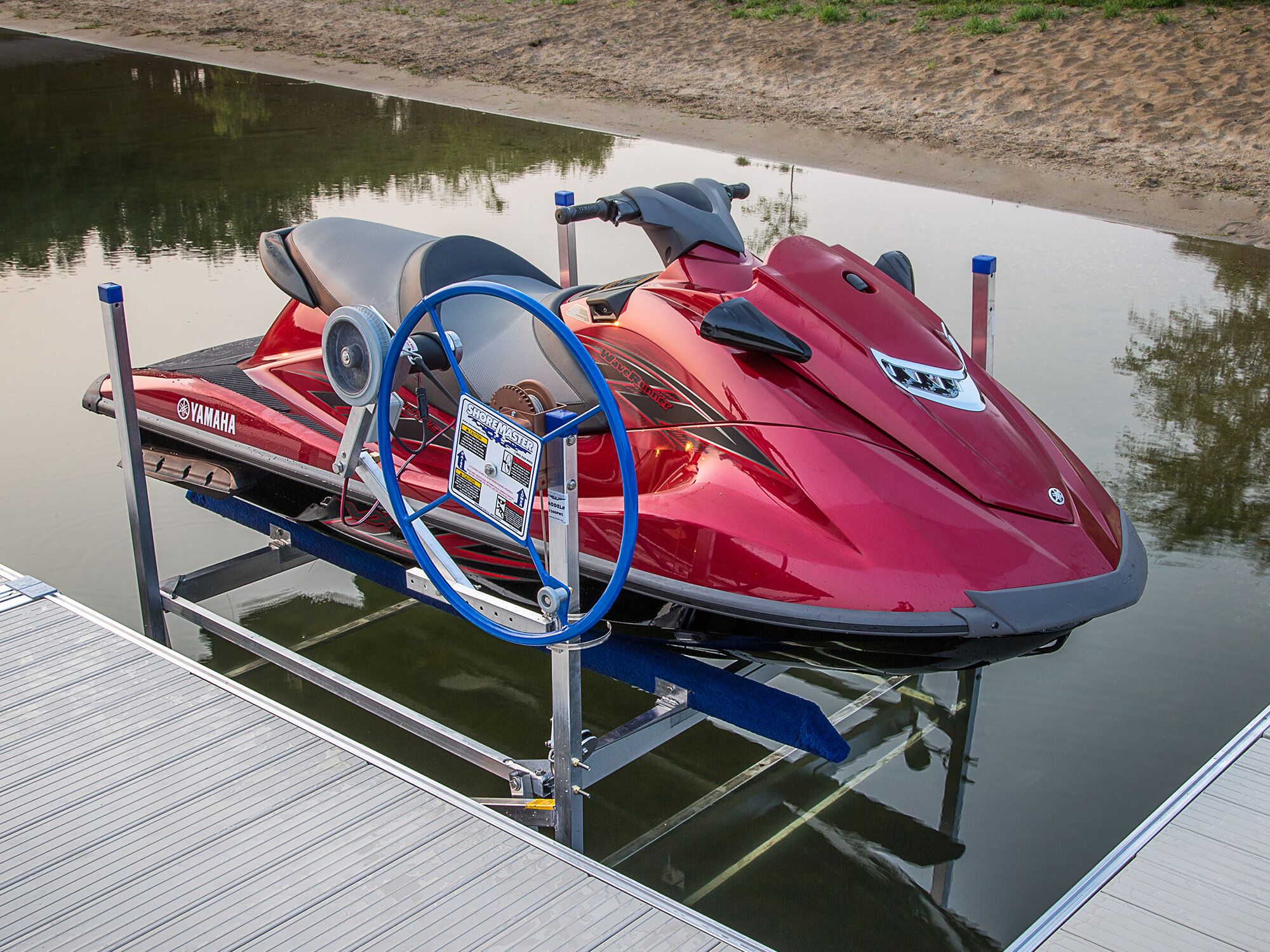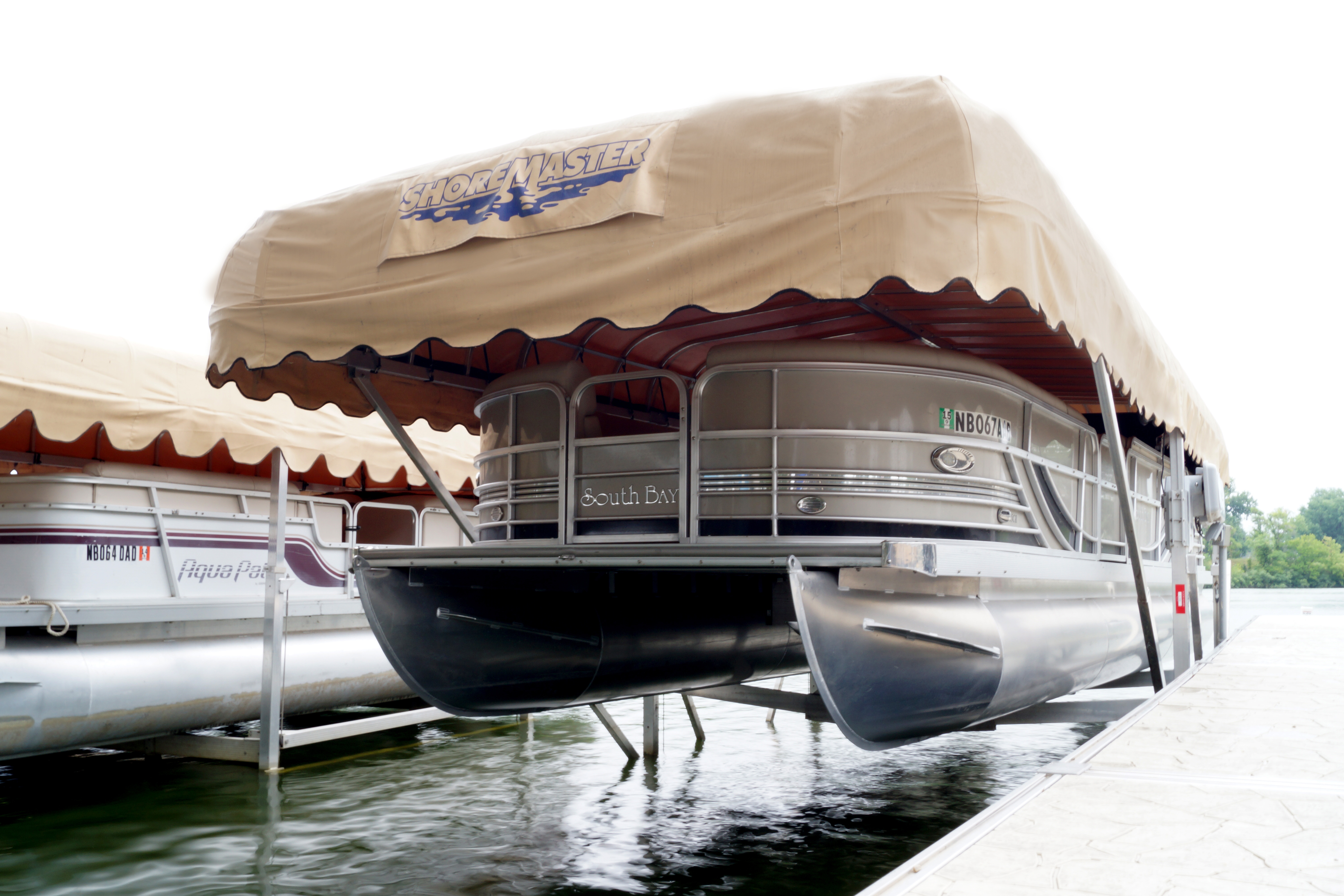July 17, 2025
Dock Safety Tips & Best Practices: Boat Dock Safety Guide | ShoreMaster
Written by ShoreMaster Marketing
Boat Dock Safety Guide: Tips and Best Practices
In recent years, boat docks have become more than a launchpad for countless outdoor adventures. They now serve as a waterfront extension of owners’ living spaces—and the backdrop for lifelong memories. However, without the appropriate precautions, docks can also become a hub for potential hazards.
Below, we discuss the primary boat dock safety considerations to help you protect your family, guests, and property—so you can focus on fun and relaxation with peace of mind.

Essential Safety Equipment for Your Dock
Even the most stable docks can pose unexpected risks. Slippery surfaces, shifting water levels, and changing currents can lead to falls or emergencies, especially when people are relaxing and have their guard down. That’s why having essential safety equipment on hand is non-negotiable for boat docks. While life jackets are a first line of defense, especially for children or non-swimmers, they’re just one piece of a comprehensive dock safety setup.
To help ensure everyone's safety, we recommend equipping your dock with the following:
- Non-Slip Mats/Surfaces: These reduce the risk of slips, especially in high-traffic areas or where water tends to collect.
- Life Rings/Throw Ropes: Quick and easy to deploy in the event someone falls in, these tools can make all the difference in a rescue.
- Ladders: Sturdy and strategically placed dock ladders facilitate safe and easy transitions to and from the water.
- Dock Lighting: Proper lighting enhances visibility, helping prevent trips, missteps, or collisions.
- First Aid Kit: For treating minor cuts, scrapes, or insect stings until professional care is available.
- Fire Extinguisher: Essential in case of electrical malfunctions, fuel spills, or grilling accidents.
Having essential safety equipment readily available creates a safer environment for your friends and family, allowing them to focus on enjoying their time on the water.
Regular Maintenance Checks
Over time, exposure to the elements and daily wear can take a toll on even the most durable boat docking system. Thoroughly cleaning your dock at least twice a season removes debris, dirt, grime, and marine growth, preventing them from weakening and damaging critical components. Use mild soap and a soft brush to scrub the decking and connecting hardware. We recommend using a garden hose, but if you plan on using a pressure washer, use its lowest setting to avoid damaging the dock decking material.
While cleaning, keep an eye out for the following:
- Surface Wear: Look for slippery spots, algae buildup, or worn-out non-slip surfaces that could increase fall risks. If needed, install anti-slip mats or grip tape in high-traffic zones to reduce fall risks.
- Loose or Corroded Hardware: Tighten any loose components and apply a rust inhibitor to mitigate corrosion.
- Structural Damage: Inspect for cracked boards, warped decking, or signs of rot that could weaken the dock’s integrity. Replace damaged boards immediately and reinforce compromised areas if needed.
Seasonal changes, heavy use, and even wildlife activity can all affect the condition of your dock. Scheduling regular inspections at the start and end of the boating season helps you catch issues early and keep your dock safer for everyone.
Electrical Safety Measures
Electricity and water are a dangerous combination. Without proper installation, grounding, and routine inspections, electrical hazards, including shocks, fires, and electrocution, can occur. That’s why we always recommend leaving electrical work to licensed professionals. This ensures the project complies with the National Electrical Code (NEC), which sets the safety standards for waterfront electrical systems (CSE Mag, 2020).
That said, one of the most important electrical safety measures is installing Ground Fault Circuit Interrupters (GFCIs) on all dock electrical systems. These devices detect even small current imbalances and shut off power within milliseconds, helping prevent dangerous shocks.
Here are some pivotal GFCI installation considerations:
- Location: All outlets on the dock should be GFCI-protected.
- Weatherproofing: Use GFCIs specifically designed for outdoor use to withstand harsh weather conditions.
- Testing: Regularly test your GFCIs to ensure they’re functioning properly.
Make a habit of inspecting electrical wiring and connections, looking for signs of damage, fraying, or exposed wires. Finally, avoid using extension cords and maintain a safe distance from overhead power lines when docking or operating your boat.
Child and Pet Safety Around Docks
Children and pets are naturally drawn to the water, often unaware of the risks a dock can pose. That’s why dock safety shouldn’t rely on supervision alone, it should be built into the environment.
Here are some tips to make your dock safer for little ones and four-legged friends:
- Use Life Jackets: Make sure kids wear properly sized, Coast Guard-approved vests, and outfit pets with flotation devices made specifically for animals (USCG Boating, n.d.).
- Establish a No-Running Rule: Slippery surfaces and sudden drop-offs make running a major hazard on any waterfront structure.
- Secure Loose Gear: Keep the dock free from clutter, storing fishing hooks, ropes, and other tools to prevent accidental snags and eliminate tripping hazards.
- Add Lighting. Proper illumination helps prevent accidents during early morning or evening hours. Install motion-activated or solar-powered lights along pathways, dock edges, and steps to reduce the risk of slips or missteps in low-light conditions.
By making your dock safer by design, you can reduce the risk of accidents and enjoy the peace of mind that comes with it. For information, check out our Boat Dock Safety Guide.
Integrating ShoreMaster Accessories for Enhanced Safety
ShoreMaster’s InfinityTrack dock accessory system offers the easiest way to enhance dock functionality and safety. This innovative design feature utilizes tracks integrated into the entire length and width of Infinity dock frames, allowing owners to add a diverse range of dock accessories by simply clamping InfinityTrack accessory brackets anywhere along the side of the dock.
Here’s an overview of some essential InfinityTrack dock accessories:
- Handrails: Adding ShoreMaster dock handrails is a great way to instantly enhance dock safety. Available in 3’, 4’, 5’, 6’, 8’, or 10’ lengths, they feature all-aluminum, precision welded construction.
- Pivoting Dock Ladders: Available in 3-, 4-, and 5-step configurations, these essential additions feature slip-resistant threads and a vertical pivoting action and locking pin so you can flip them up when not in use.
- Ramps and Gangways: For properties with uneven or sloped terrain, ShoreMaster’s ramps and gangways provide a smooth, stable transition between the dock and shoreline. Ramps come in 4’ x 4’, 4’ x 8’, and 6’ x 8’ sizes, while residential gangways are 4’ wide and come in lengths of 16’, 20’, and 24’.
- Dock Bumpers: Protect your boat and dock from accidental bumps and scrapes, and save money on costly repairs with ShoreMaster’s range of dock bumpers and fenders. Made from non-marring, high-impact polyethylene resin that absorbs and dissipates impact, they’re available in vertical, horizontal, and corner configurations so you can add the appropriate protection for all vulnerable transition zones.
- Holders and Hooks: For avid anglers, ShoreMaster offers single or four-rod holders featuring an upright, secure design that prevents tangling and sideways leaning. These holders can also accommodate umbrellas, flags, fishing nets, brooms, and boat hooks. Meanwhile, ShoreMaster multi-purpose hooks provide a straightforward storage solution for swim towels, life jackets, wet suits, and hoses to keep your clutter and tripping hazard free.
- Dock Lights: The Solar Dock Lights are mounted directly on the dock leg caps, resulting in an unobtrusive profile with no wires, no tripping hazards, and no wasted dock space.
Looking to upgrade your setup? Contact us today to learn more about the ShoreMaster Infinity Waterfront System.
FAQs
-
What are the most common hazards associated with boat docks?
Common boat dock hazards include slips and falls from wet or uneven surfaces, electrical shock due to improper wiring, unstable transitions between land and dock, and a lack of safety equipment such as ladders or life rings. Docks can also pose risks for children and pets if they aren’t equipped with barriers or supervision measures.
-
How often should I inspect and maintain my dock?
We recommend conducting a thorough inspection at least twice a year, in the spring before use and in the fall before winterization. However, it’s also important to perform quick visual checks throughout the boating season, especially after storms or heavy use. Consistent maintenance helps extend the life of your dock and keeps it safe for everyone.
References:
- Consulting - Specifying Engineer (December 29, 2020). Understanding the changes to NFPA 70-2020. Retrieved from https://www.csemag.com/understanding-the-changes-to-nfpa-70-2020/
- US Coast Guard Boating Safety Division (n.d.). Life Jacket Wear / Wearing your Life Jacket. Retrieved from https://uscgboating.org/recreational-boaters/life-jacket-wear-wearing-your-life-jacket.php



